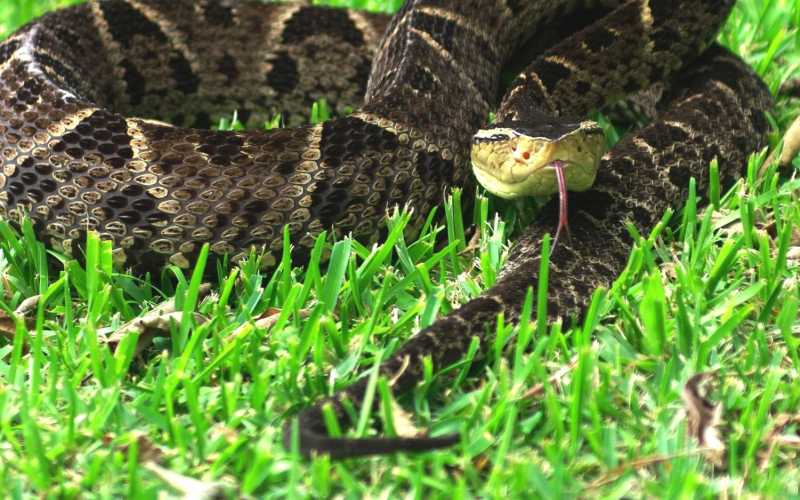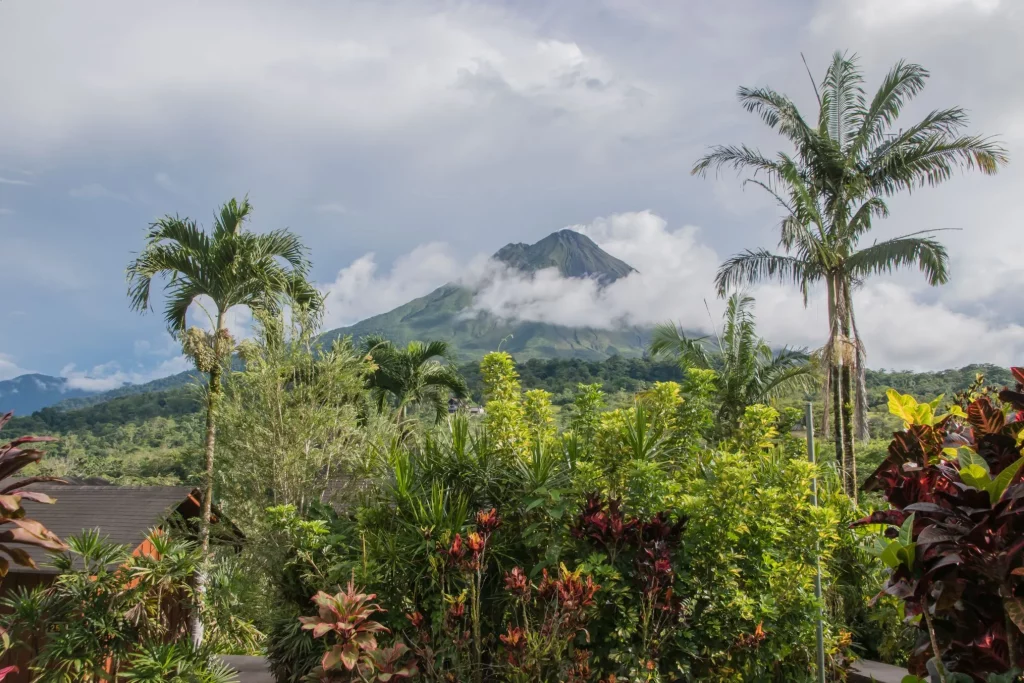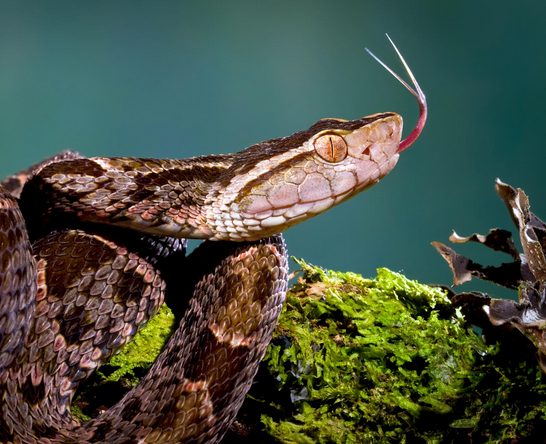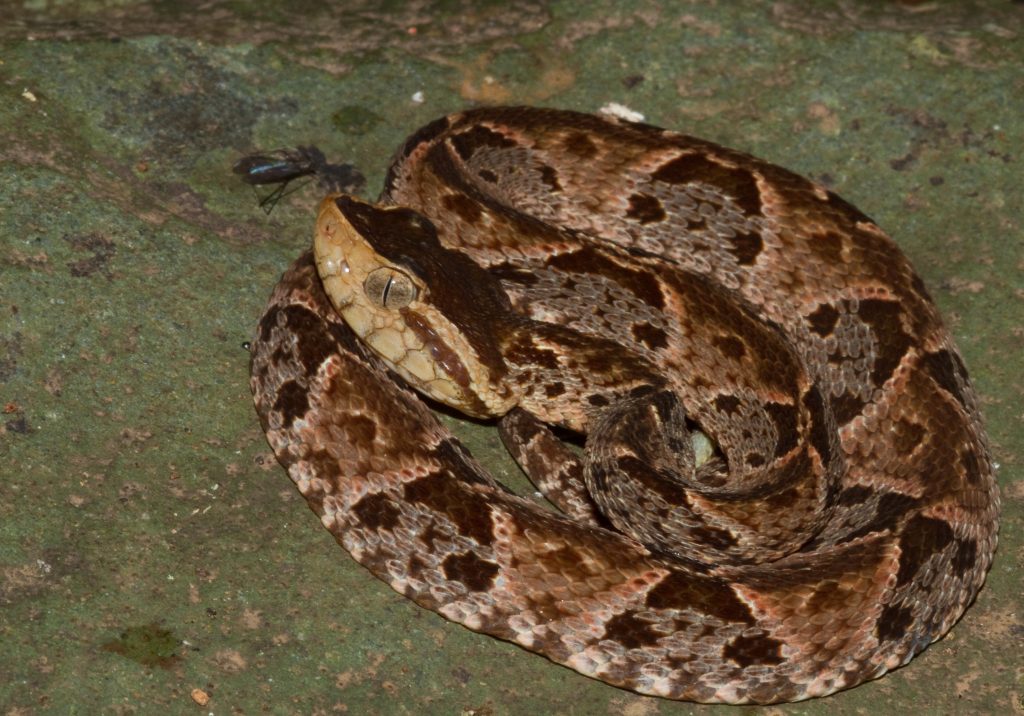The Terciopelo Snake: Tours in Costa Rica Guanacaste
The terciopelo snake, scientifically known as Bothrops asper, is a prominent species of pit viper found throughout Central America, including Costa Rica. It is particularly notable for its size, potent venom, and ecological role. By joining our tours in Costa Rica Guanacaste programs that we have here at Guanacaste Travels, you can get to spot these snakes around the jungles of the country. Our experienced guides will always be ready to provide you about information, safety measures and much more, so that you can truly get to enjoy from a magnificent adventure around this gem of a country.
For those interested in wildlife and nature, Costa Rica tours in Guanacaste offer a unique chance to encounter the terciopelo snake in its natural habitat, providing an unforgettable experience in one of the world’s most biodiverse regions. Costa Rica is renowned for its rich biodiversity, boasting a wide array of flora and fauna. Among its many residents is the impressive Bothrops asper, commonly known as the Terciopelo snake or Fer-de-Lance.
This fascinating snake is not only a vital part of Costa Rica’s ecosystem. But also a creature that attracts the attention of nature enthusiasts and adventurers alike. For those considering tours in Costa Rica Guanacaste, seeing a Terciopelo might just be one of the highlights!
For those eager to observe the Terciopelo snake, ecotourism offers plenty of opportunities. Joining a guided tour led by local experts will increase the chances of spotting this elusive reptile while also enhancing your understanding of its habitat and behaviors. Many tours in Costa Rica Guanacaste feature night hikes specifically designed to witness the region’s nocturnal wildlife, including the Terciopelo.


The Terciopelo snake is a quintessential part of Costa Rica’s natural heritage, showcasing the country’s remarkable biodiversity.
Where to find Terciopelo snakes during tours in Costa Rica Guanacaste?
Whether you’re an avid herpetologist or simply a nature lover, encountering the Terciopelo during your adventures will undoubtedly be a mesmerizing experience. As you plan your next trip, consider including a Costa Rica tours in Guanacaste that highlights the stunning wildlife of this beautiful country, and keep your eyes peeled for the extraordinary Terciopelo snake.
The Terciopelo snake predominantly inhabits lowland tropical rainforests, but it can also be found in a variety of habitats, including dry forests and plantations. In Costa Rica, these snakes are especially abundant in the regions of Guanacaste, where the lush scenery provides both shelter and an abundant food supply. For anyone interested in Costa Rica tours in Guanacaste, guided nature walks present an excellent opportunity to observe this remarkable species in its natural habitat. Terciopelos are commonly found in a variety of habitats across Costa Rica, such as:
- Rainforests.
- Dry forests.
- Agricultural areas.
- Rivers.
They prefer low to moderate elevations and can often be spotted hiding in leaf litter or under fallen logs during the day. This snake is known for its ambush hunting strategy, lying in wait for prey to pass by before striking. Terciopelos are primarily nocturnal, which helps reduce encounters with humans and other predators.

In terms of geographic distribution, the terciopelo snake is widespread in Costa Rica, making it a common sight for those exploring the country’s diverse ecosystems. Costa Rica tours in Guanacaste often provide opportunities to observe this fascinating species in its natural habitat.
What do they eat?
The terciopelo snake is a generalist predator with a varied diet that changes as it matures. Juveniles typically feed on small lizards and large insects, while adults primarily consume rodents, frogs, and other small mammals. In Costa Rica, common prey items of the Terciopelo snake species, include:
- Rodents: Such as rats and opossums.
- Amphibians: Frogs are a significant part of their diet.
- Reptiles: Including smaller snakes and lizards.
- Insects: Various insects like grasshoppers and beetles.
This dietary flexibility allows the terciopelo to thrive in different environments, playing a crucial role in controlling rodent populations.

The Terciopelo snake is a carnivorous predator, primarily feeding on small mammals, birds, and occasionally reptiles. Its diet mainly consists of rodents, which it has become adept at hunting. The snake employs its keen sense of smell and heat-sensing pits located on its face to detect warm-blooded prey. Allowing it to hunt effectively even in low light conditions. This predatory advantage is critical in its role within the ecosystem. Helping to maintain the balance of rodent populations in the area.
Interesting facts to know for your tours in Costa Rica Guanacaste
If you are looking to go on the perfect adventure around Costa Rica and more specifically, you want to get to see these snakes, there are some few things that you should know. Some interesting facts that you would need to know about these snakes, their behavior, and more, are:
- Venom: The terciopelo is known for its highly potent hemotoxic venom, which can cause severe tissue damage and pain. It is responsible for a significant percentage of snakebite incidents in Costa Rica. Accounting for 46% of all bites and 30% of hospitalizations due to snakebites.
- Defensive Nature: Despite its fearsome reputation, the terciopelo generally avoids human contact. Bites usually occur when the snake is cornered or threatened.
- Conservation Status: While the terciopelo faces threats from habitat destruction and human persecution. It is an integral part of the ecosystem, helping to maintain the balance of prey populations.
- Research: The Clodomiro Picado Research Institute in Costa Rica conducts studies on the terciopelo. To better understand its behavior, ecology, and venom properties, which may have potential medical applications.
By joining our Costa Rica tours in Guanacaste programs we will totally assure your safety. Our experience guides will always look for your best and they will surely tell you everything. So that, before getting in contact with these species, you already know all the safety protocols. In Costa Rica, the Terciopelo snake holds a place in local folklore and culture. Considered both a feared and respected creature, it embodies the rich mystique of the rainforest.

